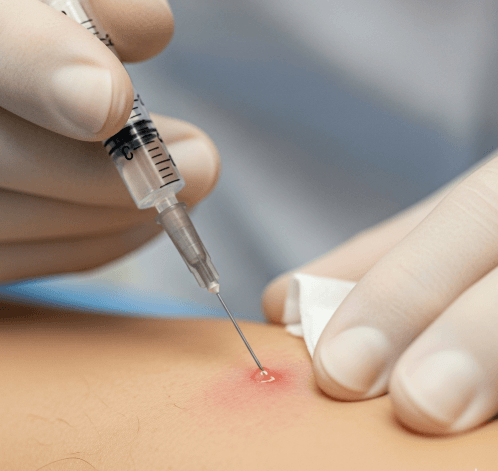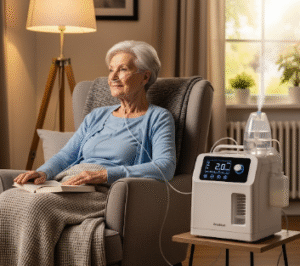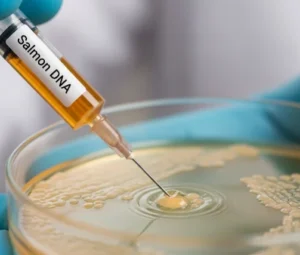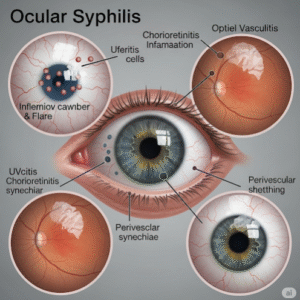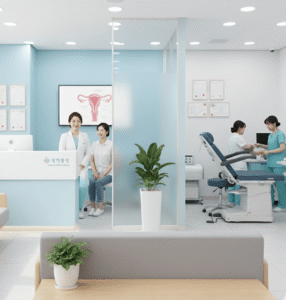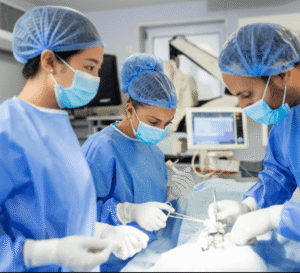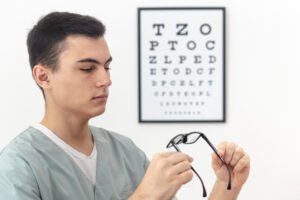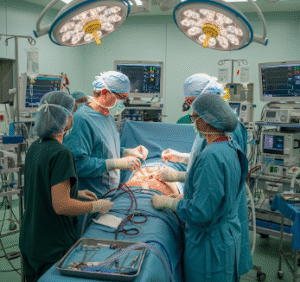What It Is
Defining Intralesional Steroid Treatment
→ Intralesional steroid treatment involves injecting a corticosteroid solution directly into a skin lesion or scar.
→ It is most commonly used to treat keloid scars, hypertrophic scars, cystic acne, alopecia areata, and other inflammatory skin conditions.
→ The injection delivers steroids precisely to the targeted tissue, helping reduce inflammation, shrink thickened tissue, and improve cosmetic appearance.
Key Characteristics
- Localized treatment (affects the scar or lesion directly, not the whole body)
- Helps flatten raised scars and soften hardened tissue
- Reduces redness, swelling, itching, and discomfort
- Often used as a first-line treatment for abnormal scarring
Why It’s Done
Main Reasons for Treatment
➡ Scar Management – To flatten keloid and hypertrophic scars, reducing their thickness and symptoms.
➡ Inflammatory Skin Disorders – Used for psoriasis plaques, lichen planus, granulomas, or chronic eczema patches.
➡ Acne Nodules and Cysts – Intralesional steroids can rapidly reduce painful acne nodules.
➡ Hair Loss Conditions – Especially in alopecia areata, the injection stimulates regrowth by reducing autoimmune inflammation.
➡ Pain and Discomfort Relief – Helps reduce itching, burning, and sensitivity associated with scars or skin lesions.
Alternatives
Non-Medical Options
- Silicone Gel or Sheets → Used for mild scar flattening
- Massage Therapy → Helps in improving circulation and softening small scars
- Topical Ointments → Includes retinoids, steroid creams, or natural remedies
Medical Alternatives
→ If intralesional steroids are not effective or suitable, patients may consider:
- Laser Therapy for reducing redness and scar thickness
- Cryotherapy for freezing and shrinking lesions
- Surgical Excision followed by preventive therapy
- Microneedling with RF for scar remodeling
- Radiation Therapy (for severe recurrent keloids)
Preparation
Before Treatment
➡ Dermatology Consultation – The scar or lesion is examined for type, size, depth, and activity.
➡ Medical History – Patient should disclose allergies, steroid sensitivity, and existing medical conditions.
➡ No Special Fasting Needed – It’s an outpatient procedure, requiring no anesthesia for most cases.
➡ Skin Cleansing – Area is disinfected prior to injection to avoid infection.
➡ Expectation Setting – Multiple sessions may be required, as single injections rarely achieve full results.
How It’s Done
The Injection Procedure
Step 1: Cleansing
→ The treatment area is sterilized with an antiseptic solution.
Step 2: Steroid Preparation
→ A corticosteroid (most commonly triamcinolone acetonide) is diluted to the proper strength depending on the lesion type.
Step 3: Injection
→ A fine needle is used to inject the steroid into the mid-dermis or scar tissue.
- For keloids → deeper, more concentrated injections
- For acne nodules → smaller, superficial injections
- For alopecia → multiple tiny injections across the scalp area
Step 4: Post-Injection Care
→ A light dressing or cream may be applied.
→ The procedure usually takes only a few minutes, and patients can return to daily activities immediately.
Treatment Course
- Typically repeated every 3–6 weeks
- Number of sessions depends on scar size and response
- Often combined with laser therapy, cryotherapy, or surgery for best results
Recovery
Immediate Recovery
- Mild redness, swelling, or tenderness at injection site
- Sometimes slight skin lightening around the injection point
- Most patients resume normal activities right after treatment
Long-Term Recovery
→ Improvement becomes visible gradually:
- Scar flattening within weeks
- Pain and itching relief often immediate or within days
- Hair regrowth in alopecia areata may take several sessions
→ Patients are advised to continue sun protection, silicone gel use, and moisturization for optimal outcomes.
Complications
Possible Risks
- Skin Atrophy → Thinning of skin at injection site if overused
- Hypopigmentation → Lightening of skin color, especially in darker tones
- Telangiectasia → Small red blood vessels may appear on surface
- Recurrence of Scar → Scars may return if treatment is discontinued prematurely
- Pain or Discomfort → Mild injection site pain, generally short-lived
Treatment Options in Korea
Advanced Clinical Expertise
South Korea is a global leader in cosmetic dermatology and scar management, with intralesional steroid injections forming a core part of treatment programs.
Why Korea is Highly Regarded for This Treatment
➡ Experienced Dermatologists – Specialists with deep expertise in treating scars, acne, and hair loss
➡ Customized Dosages – Korean clinics tailor steroid concentrations based on individual scar type and skin sensitivity
➡ Combination Therapies – Clinics often combine steroid injections with lasers, cryotherapy, or silicone dressing for superior outcomes
➡ Minimally Invasive – Quick, outpatient procedure with minimal downtime
Popular Uses in Korea
- Keloid and Hypertrophic Scar Flattening with tailored steroid concentrations
- Post-Surgical Scar Management to prevent raised scarring after procedures like double eyelid surgery or mole removal
- Cystic Acne Control – Intralesional steroids for emergency treatment of painful acne breakouts
- Alopecia Areata Treatment – Regular scalp injections to stimulate regrowth
Patient Experience in Korea
- Procedures performed in outpatient dermatology clinics
- Sessions are quick, usually under 15 minutes
- Clinics emphasize comfort, minimal pain, and cosmetic precision
- Patients receive aftercare instructions and follow-up schedules to ensure long-term improvement
Conclusion
Intralesional steroid treatment in Korea is a precise, highly effective procedure widely used to manage raised scars, stubborn acne, and inflammatory skin conditions. By directly targeting the problem area, it delivers rapid results with minimal side effects.
Korean dermatology clinics excel in providing personalized, combination-based care that not only reduces scar thickness and discomfort but also prevents recurrence. For patients struggling with hypertrophic scars, keloids, acne nodules, or alopecia areata, Korea offers some of the most advanced and reliable options worldwide.

